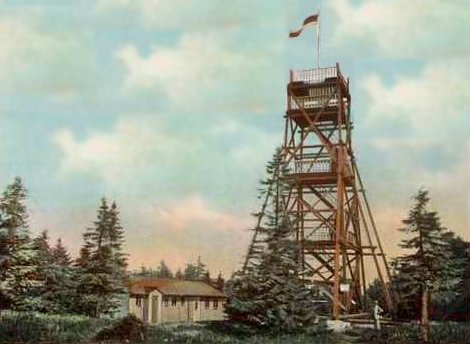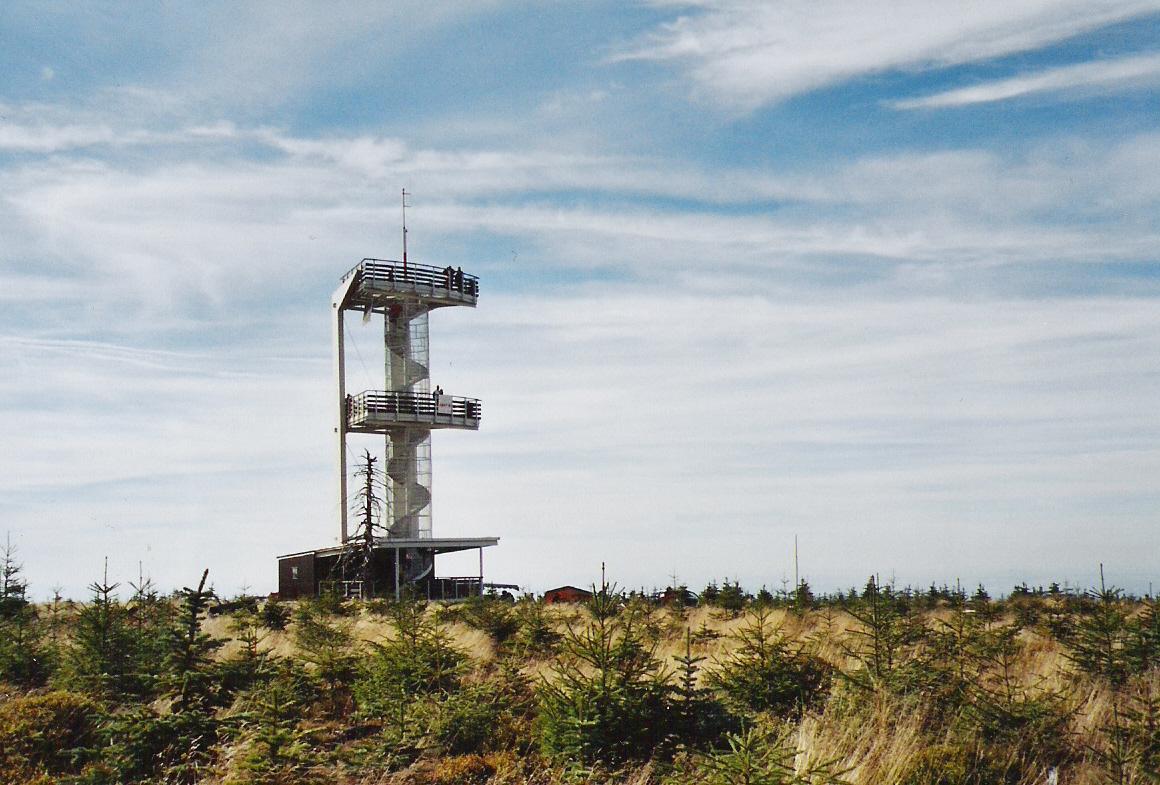Smrk (Jizera) on:
[Wikipedia]
[Google]
[Amazon]
Smrk ( pl, Smrek; german: Tafelfichte) is the highest mountain in the


 The "Tabulový kámen" (''Tafelstein'') stone monument on the northern slope marks the site, which since the Middle Ages formed the historic
The "Tabulový kámen" (''Tafelstein'') stone monument on the northern slope marks the site, which since the Middle Ages formed the historic
Czech
Czech may refer to:
* Anything from or related to the Czech Republic, a country in Europe
** Czech language
** Czechs, the people of the area
** Czech culture
** Czech cuisine
* One of three mythical brothers, Lech, Czech, and Rus'
Places
* Czech, ...
part of the Jizera Mountains
Jizera Mountains ( cz, Jizerské hory), or Izera Mountains ( pl, Góry Izerskie; german: Isergebirge), are part of the Western Sudetes on the border between the Czech Republic and Poland. The range got its name from the Jizera River, which rises a ...
. Rising , it is sometimes known as "The King of the Jizera Mountains".
Geography
The top of the mountain lies in the municipal territory ofLázně Libverda
Lázně Libverda (german: Bad Liebwerda) is a spa municipality and village in Liberec District in the Liberec Region of the Czech Republic. It has about 400 inhabitants.
Etymology
The original German name ''Liebenwerde'' is an abbreviation of ''au ...
in the Liberec Region
Liberec Region ( cs, Liberecký kraj, german: Reichenberger Region, pl, Kraj liberecki) is an administrative unit ( Czech: ''kraj'') of the Czech Republic, located in the northernmost part of its historical region of Bohemia. It is named after ...
of northern Bohemia. On the eastern rim of the plateau is the boundary with Poland
Poland, officially the Republic of Poland, is a country in Central Europe. It is divided into 16 administrative provinces called voivodeships, covering an area of . Poland has a population of over 38 million and is the fifth-most populou ...
; the Polish summit west of Świeradów-Zdrój
Świeradów-Zdrój (; german: Bad Flinsberg) is a spa town in Lubań County, Lower Silesian Voivodeship, in south-western Poland near the border with the Czech Republic. The town is located in the Kwisa valley of the Jizera Mountains, a part of ...
reaches a height of .
The summit offers a panoramic view to the prominent Sněžka
Sněžka or Śnieżka (in Czech and Polish respectively; german: Schneekoppe, sk, Snežka) is a mountain on the border between the Czech Republic and Poland, the most prominent point of the Silesian Ridge in the Giant Mountains. At , its summit ...
peak of the Giant Mountains
The Giant Mountains, Krkonoše or Karkonosze (Czech: , Polish: , german: Riesengebirge) are a mountain range located in the north of the Czech Republic and the south-west of Poland, part of the Sudetes mountain system (part of the Bohemian Massi ...
in the east, as well as to the Lusatian Highlands beyond the German
German(s) may refer to:
* Germany (of or related to)
** Germania (historical use)
* Germans, citizens of Germany, people of German ancestry, or native speakers of the German language
** For citizens of Germany, see also German nationality law
**Ge ...
border in the west up to the cooling towers of Boxberg Power Station
Boxberg Power Station (in German commonly referred as ''Kraftwerk Boxberg'') is a lignite-fired power station with three units at Boxberg, near Weißwasser, Saxony, Eastern Germany. Since the late 1990s, it has a capacity of 1,900 MW.
In 2001, ...
.
History


tripoint
A tripoint, trijunction, triple point, or tri-border area is a geographical point at which the boundaries of three countries or subnational entities meet. There are 175 international tripoints as of 2020. Nearly half are situated in rivers, l ...
between
* the Upper Lusatia
Upper Lusatia (german: Oberlausitz ; hsb, Hornja Łužica ; dsb, Górna Łužyca; szl, Gōrnŏ Łużyca; pl, Łużyce Górne or ''Milsko''; cz, Horní Lužice) is a historical region in Germany and Poland. Along with Lower Lusatia to the ...
n lordship of ''Meffersdorf'' (Polish: Unięcice, in present-day Pobiedna)
* the Lower Silesia
Lower Silesia ( pl, Dolny Śląsk; cz, Dolní Slezsko; german: Niederschlesien; szl, Dolny Ślōnsk; hsb, Delnja Šleska; dsb, Dolna Šlazyńska; Silesian German: ''Niederschläsing''; la, Silesia Inferior) is the northwestern part of the ...
n duchy of Jawor
Jawor (german: Jauer) is a town in south-western Poland with 22,890 inhabitants (2019). It is situated in the Lower Silesian Voivodeship (from 1975 to 1998 it was in the former Legnica Voivodeship). It is the seat of Jawor County, and lies appr ...
, where the lands around Szklarska Poręba
Szklarska Poręba (german: Schreiberhau) is a town in Jelenia Góra County, Lower Silesian Voivodeship, in south-western Poland. The town has a population of around 6,500. It is a popular ski resort.
An important regional and national centre fo ...
(''Schreiberhau'') were held by the House of Schaffgotsch, and
* the Bohemian territory around Frýdlant
Frýdlant (; also known as Frýdlant v Čechách, german: Friedland in Böhmen) is a town in Liberec District in the Liberec Region of the Czech Republic. It has about 7,400 inhabitants. The town centre is well preserved and is protected by law a ...
(''Friedland'').
The mountain got its name from a once mighty spruce ( cs, smrk, German: ''Fichte'') tree near the border, where the Imperial generalissimo Albrecht von Wallenstein
Albrecht Wenzel Eusebius von Wallenstein () (24 September 1583 – 25 February 1634), also von Waldstein ( cs, Albrecht Václav Eusebius z Valdštejna), was a Bohemian military leader and statesman who fought on the Catholic side during the Th ...
, after his elevation to a Duke of Friedland, nailed his coat of arms
A coat of arms is a heraldic visual design on an escutcheon (i.e., shield), surcoat, or tabard (the latter two being outer garments). The coat of arms on an escutcheon forms the central element of the full heraldic achievement, which in its ...
in 1628. The tree was uprooted, in 1790, by a storm.
Bohemia, Silesia and Lusatia had all been Lands of the Bohemian Crown
The Lands of the Bohemian Crown were a number of incorporated states in Central Europe during the medieval and early modern periods connected by feudal relations under the Bohemian kings. The crown lands primarily consisted of the Kingdom of ...
since the 14th century, and part of the Austrian Habsburg monarchy from 1526. After Upper Lusatia passed to the Electorate of Saxony during the Thirty Years' War
The Thirty Years' War was one of the longest and most destructive conflicts in European history, lasting from 1618 to 1648. Fought primarily in Central Europe, an estimated 4.5 to 8 million soldiers and civilians died as a result of battle ...
by the 1635 Peace of Prague, and the Prussian
Prussia, , Old Prussian: ''Prūsa'' or ''Prūsija'' was a German state on the southeast coast of the Baltic Sea. It formed the German Empire under Prussian rule when it united the German states in 1871. It was ''de facto'' dissolved by an e ...
king Frederick the Great
Frederick II (german: Friedrich II.; 24 January 171217 August 1786) was King in Prussia from 1740 until 1772, and King of Prussia from 1772 until his death in 1786. His most significant accomplishments include his military successes in the S ...
conquered Silesia in 1742, the mountain was also the tripoint between the Saxon, Prussian and Austrian lands. According to the 1815 Congress of Vienna
The Congress of Vienna (, ) of 1814–1815 was a series of international diplomatic meetings to discuss and agree upon a possible new layout of the European political and constitutional order after the downfall of the French Emperor Napoleon B ...
, Prussia also annexed the Upper Lusatian lands in the northwest, which were incorporated into the Province of Silesia
The Province of Silesia (german: Provinz Schlesien; pl, Prowincja Śląska; szl, Prowincyjŏ Ślōnskŏ) was a province of Prussia from 1815 to 1919. The Silesia region was part of the Prussian realm since 1740 and established as an official p ...
.
On 21 August 1892, a wooden observation tower
An observation tower is a structure used to view events from a long distance and to create a full 360 degree range of vision to conduct long distance observations. Observation towers are usually at least tall and are made from stone, iron, an ...
, which was high, was built atop Tafelfichte. The mountain hut
A mountain hut is a building located high in the mountains, generally accessible only by foot, intended to provide food and shelter to mountaineers, climbers and hikers. Mountain huts are usually operated by an Alpine Club or some organization ...
used to house the construction workers was converted, after the tower's construction, to a cottage (''Baude'', ''bouda''). Until 1935, up to 18,000 people per year visited the mountain summit.
In 1909, a memorial stone honoring the German poet Theodor Körner was erected at the summit to commemorate his stay a hundred years before.
After World War II
World War II or the Second World War, often abbreviated as WWII or WW2, was a world war that lasted from 1939 to 1945. It involved the vast majority of the world's countries—including all of the great powers—forming two opposing ...
the local German population was expelled and the cottage was deserted and looted. The abandoned premises fell into disrepair and the tower collapsed in the 1950s. Over the following decades forest dieback
Forest dieback (also "", a German loan word) is a condition in trees or woody plants in which peripheral parts are killed, either by pathogens, parasites or conditions like acid rain, drought, and more. These episodes can have disastrous conse ...
, from parasites or acid rain, has cleared the peak of the mountain to the point where it is largely bare.
After the 1989 Velvet Revolution
The Velvet Revolution ( cs, Sametová revoluce) or Gentle Revolution ( sk, Nežná revolúcia) was a non-violent transition of power in what was then Czechoslovakia, occurring from 17 November to 28 November 1989. Popular demonstrations agains ...
, plans were made to build a new tower. In 2002, construction began and on September 18, 2003 a second tower, this time made with steel, was inaugurated. In June 2009, a replica of the 19th-century wooden tower was erected at the Prague Zoo
Prague Zoological Garden (Czech: ''Zoologická zahrada hl. m. Prahy'') is a zoo in Prague, Czech Republic. It was opened in 1931 with the goal to "advance the study of zoology, protect wildlife, and educate the public" in the district of Troja in ...
.
Ascents
* A good starting point is the Czech town ofLázně Libverda
Lázně Libverda (german: Bad Liebwerda) is a spa municipality and village in Liberec District in the Liberec Region of the Czech Republic. It has about 400 inhabitants.
Etymology
The original German name ''Liebenwerde'' is an abbreviation of ''au ...
from where a red-marked trail leads to the Smrk summit.
* A likewise steep route from the Polish side starts at Świeradów-Zdrój
Świeradów-Zdrój (; german: Bad Flinsberg) is a spa town in Lubań County, Lower Silesian Voivodeship, in south-western Poland near the border with the Czech Republic. The town is located in the Kwisa valley of the Jizera Mountains, a part of ...
via the Stóg Izerski (''Heufuder'') subpeak to the summit.
* Another convenient route is from the Czech Smědava (''Wittighaus'') inn for along red markers. Only the last section, called "Jacob's Ladder" (''Himmelsleiter'') is steeply uphill.
References
{{Authority control Smrk (Jizera) Bohemia Mountain peaks of the Sudetes